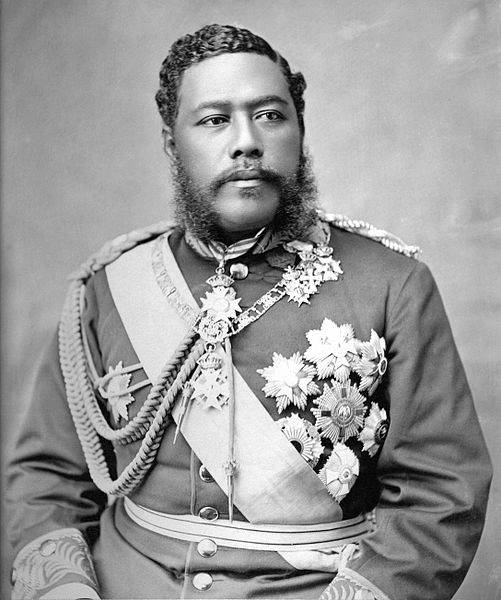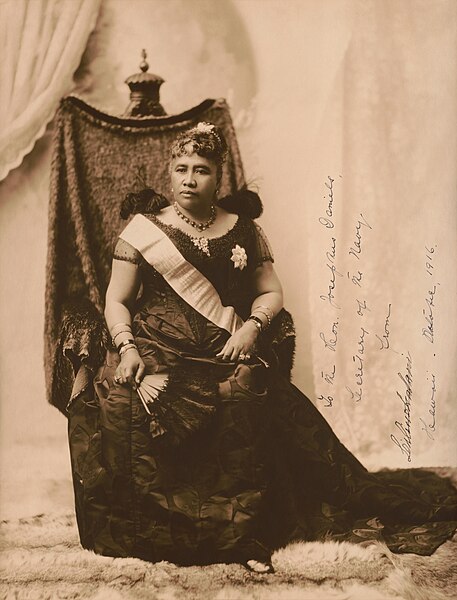Kapiʻolani was the queen of the Kingdom of Hawaiʻi as the consort of Mōʻī (king) Kalākaua, who reigned from 1874 to his death in 1891, when she became known as the Dowager Queen Kapiʻolani. Deeply interested in the health and welfare of Native Hawaiians, Kapiʻolani established the Kapiʻolani Home for Girls, for the education of the daughters of residents of the Kalaupapa Leprosy Settlement, and the Kapiʻolani Maternity Home, where Hawaiian mothers and newborns could receive care.
Kapiʻolani
Queen Kapiʻolani and her crown, c. 1883
The Sisters of St. Francis and Walter Murray Gibson at the Kapiʻolani Home for Girls, 1886
Queen Kapiʻolani wearing Niʻihau necklace at Queen Victoria's Golden Jubilee celebration
The Hawaiian Kingdom, also known as Kingdom of Hawaiʻi, was a sovereign state ruled by unelected dynastic families located in the Hawaiian Islands which existed from 1795 to 1893. It was established during the late 18th century when Hawaiian chief Kamehameha I, from the island of Hawaiʻi, conquered the islands of Oʻahu, Maui, Molokaʻi, and Lānaʻi, and unified them under one government. In 1810, the Hawaiian Islands were fully unified when the islands of Kauaʻi and Niʻihau voluntarily joined the Hawaiian Kingdom. Two major dynastic families ruled the kingdom, the House of Kamehameha and the House of Kalākaua.
Hawaiian military officer, 1819 (by Jacques Arago)
King Kalākaua meeting U.S. President Grant at the White House, 1874
King Kalākaua
Liliʻuokalani








